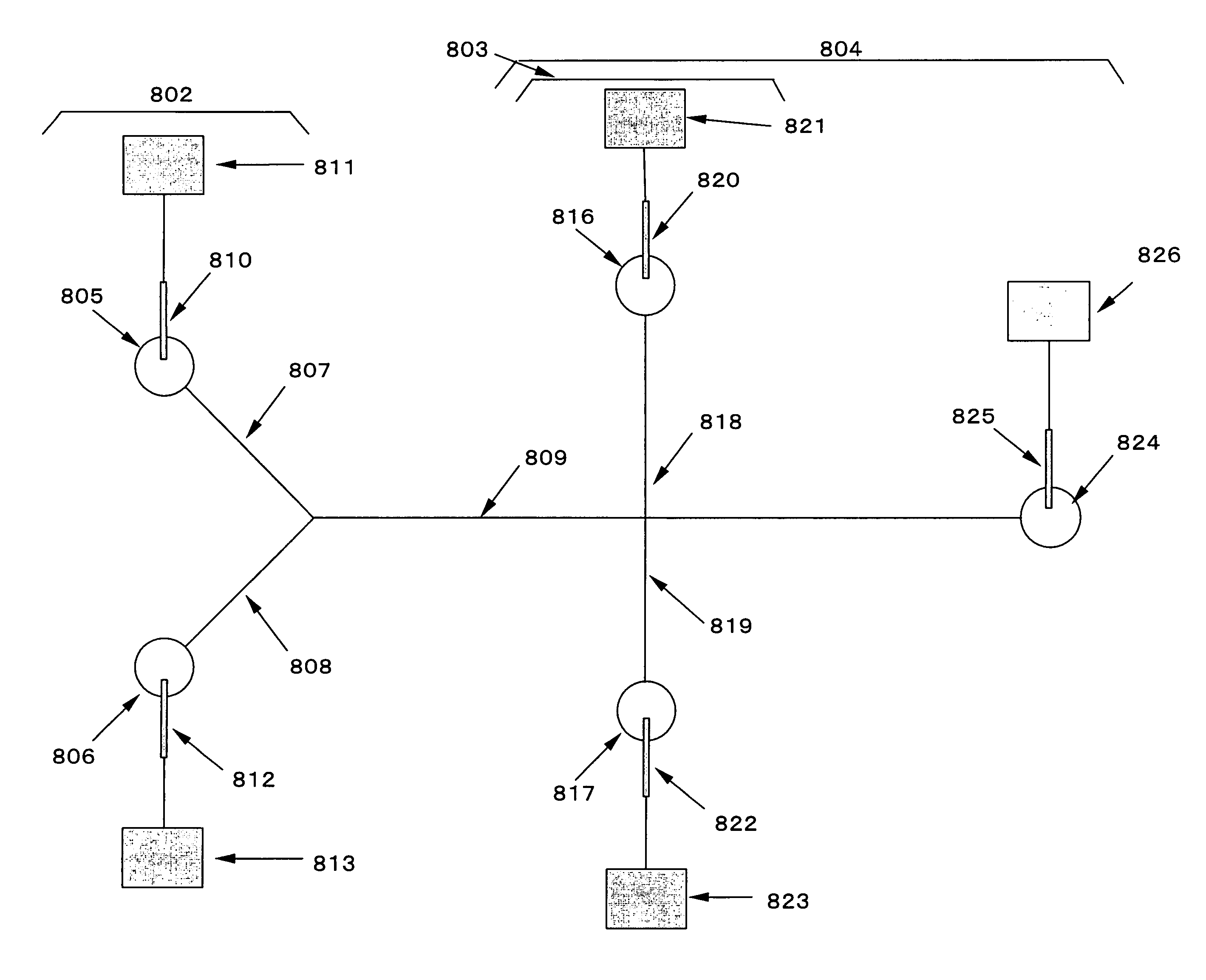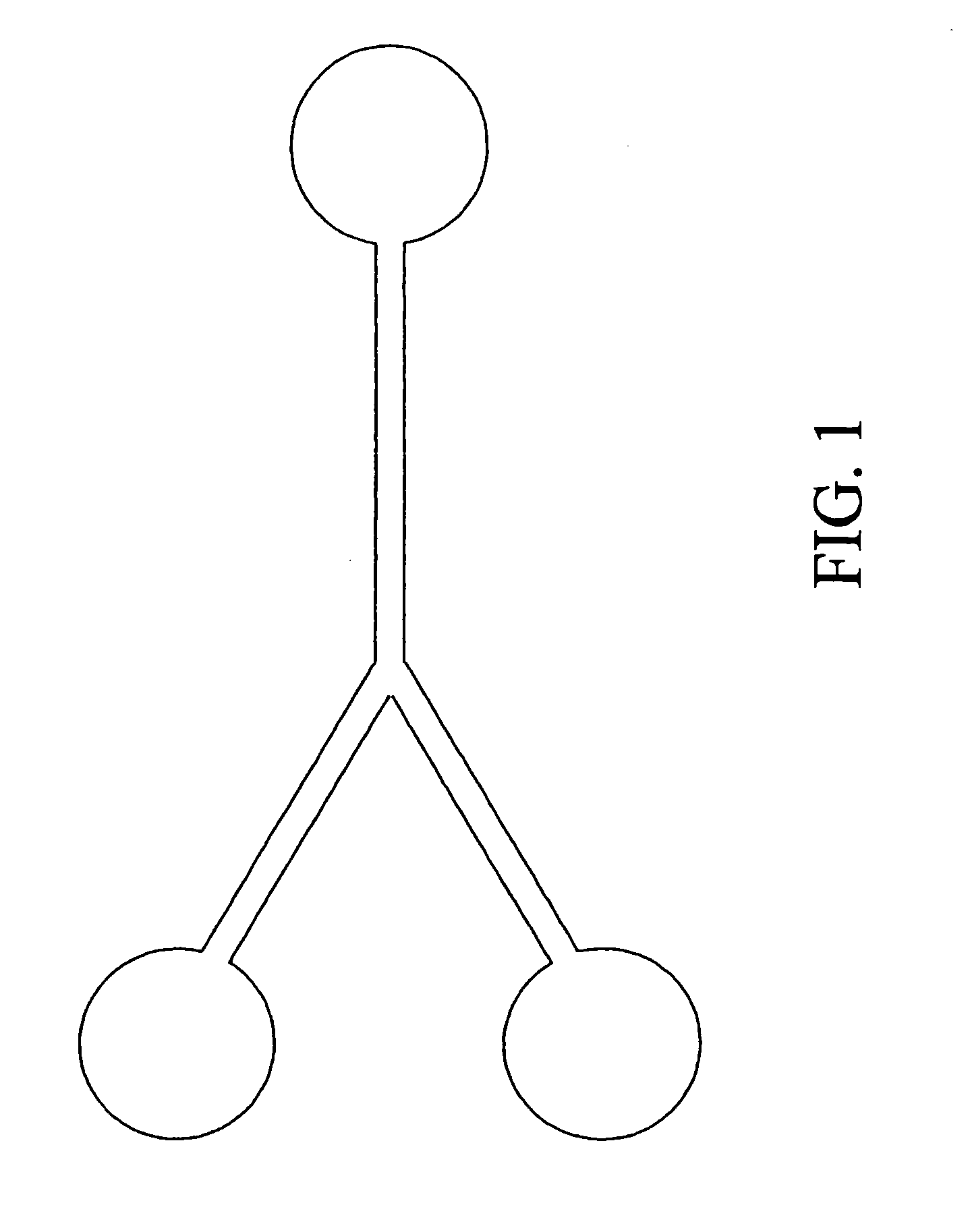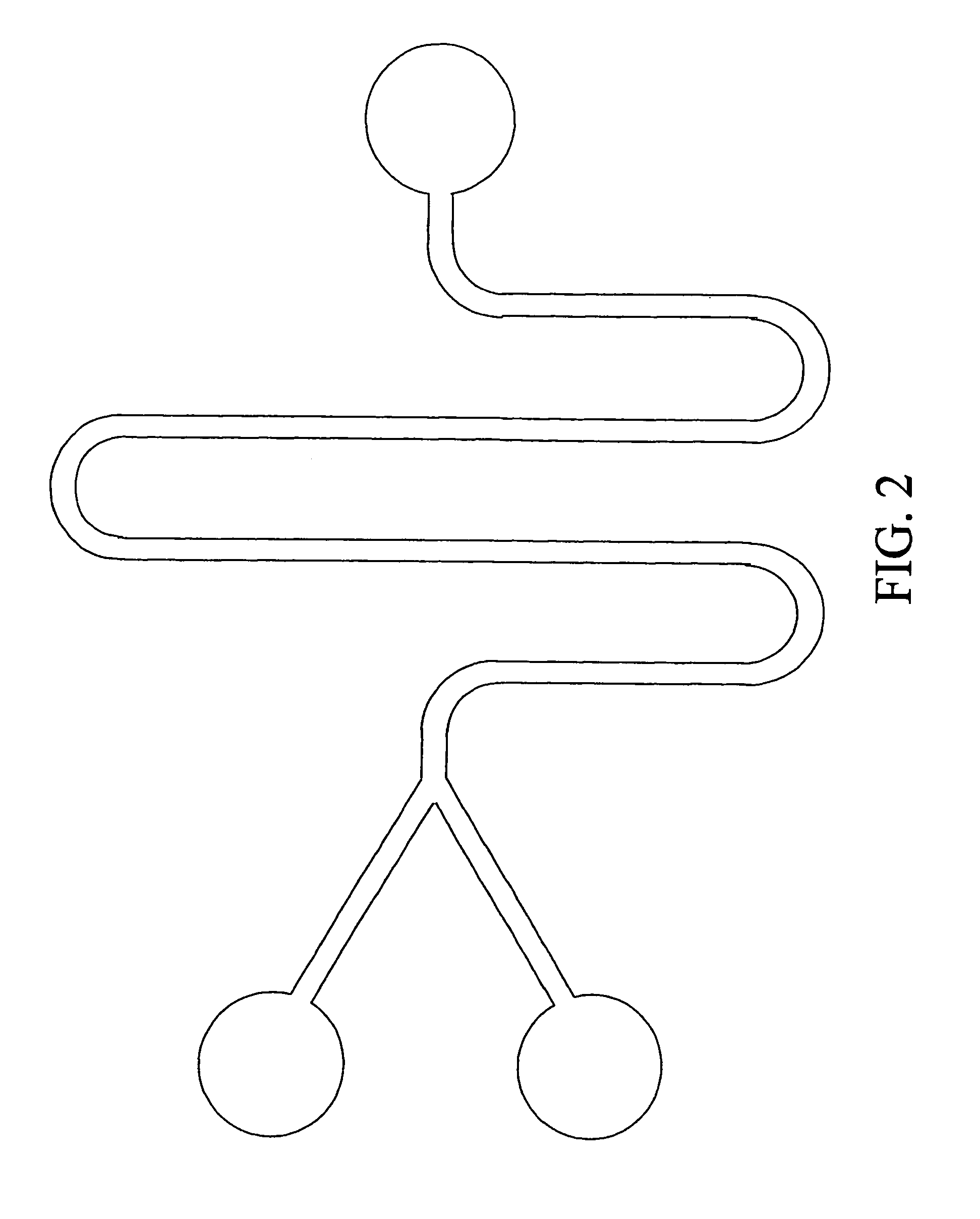Microfluidic treatment method and device
a microfluidic treatment and microfluidic technology, applied in flow mixers, electrolysis, diaphragms, etc., can solve the problems of affecting the simplification of experimental procedures, affecting the efficiency of the experiment, so as to achieve effective enhancement of mixing and increase the area , the effect of increasing the area
- Summary
- Abstract
- Description
- Claims
- Application Information
AI Technical Summary
Benefits of technology
Problems solved by technology
Method used
Image
Examples
embodiment b
[0184][FIG. 69] A conceptual view showing an intermittent denaturant arrangement of a first form according to the embodiment B.
[0185][FIG. 70] A conceptual view showing an intermittent denaturant arrangement of a second form according to the embodiment B.
[0186][FIG. 71] A perspective view showing the schematic configuration of an electrophoretic apparatus containing a slab gel having the intermittent denaturant arrangement.
[0187][FIG. 72] A conceptual view showing the intermittent denaturant arrangement formed on a microchannel.
[0188][FIG. 73] A view showing an example of a microchip electrophoretic apparatus according to the embodiment B.
[0189][FIG. 74] A view showing another example of the microchip electrophoretic apparatus according to the embodiment B.
[0190][FIG. 75] A view showing another example of the microchip electrophoretic apparatus according to the embodiment B.
[0191][FIGS. 76(a) and 76(b)] Configurational drawings of respective substrates constituting the apparatus of ...
embodiment
A Concerning DGGE
[0329]In embodiment A, a denaturing gradient is formed so as to be continuously changed in the direction of electrophoresis.
[0330]The microchip electrophoretic apparatus of the present embodiment comprises at least two liquid-introducing microchannels for introducing buffer solutions containing a denaturant at different concentrations; and a mixing microchannel to which the at least two liquid-introducing microchannels connect, and a concentration gradient region of the denaturant is formed by the convergence, in the mixing microchannel, of the buffer solutions introduced at varying ratios from the liquid-introducing microchannels.
[0331]A preferred embodiment has a mixing enhancing means for enhancing the mixing of the buffer solutions converging in the mixing microchannel. As this mixing enhancing means, each of the aforementioned embodiments 1-1 to 2-3, and any combination of these embodiments can be applied.
Microchip Electrophoretic Apparatus of the Embodiment A
[...
embodiment b concerned
with DGGE
[0368]The DGGE method of the embodiment B comprises arranging buffer solution zones (electrophoretic gel) containing a denaturant at different concentrations alternately in the direction of electrophoresis, and introducing an analyte into the resulting gradient region for electrophoresis.
[0369]In the microchip electrophoretic apparatus of the embodiment B, buffer solution zones containing a denaturant at different concentrations are arranged alternately in a microchannel in the direction of electrophoresis, and an analyte is introduced into the resulting gradient region for electrophoresis.
(1) Principle of the Present Embodiment
[0370]A method for separating double-stranded nucleic acids by the embodiment B is characterized by arranging at least two buffer solution zones containing a denaturant at different concentrations alternately in the direction of electrophoresis of the nucleic acids. The nucleic acids are electrophoretically moved in a discontinuous arrangement struct...
PUM
| Property | Measurement | Unit |
|---|---|---|
| size | aaaaa | aaaaa |
| size | aaaaa | aaaaa |
| depth | aaaaa | aaaaa |
Abstract
Description
Claims
Application Information
 Login to View More
Login to View More - R&D
- Intellectual Property
- Life Sciences
- Materials
- Tech Scout
- Unparalleled Data Quality
- Higher Quality Content
- 60% Fewer Hallucinations
Browse by: Latest US Patents, China's latest patents, Technical Efficacy Thesaurus, Application Domain, Technology Topic, Popular Technical Reports.
© 2025 PatSnap. All rights reserved.Legal|Privacy policy|Modern Slavery Act Transparency Statement|Sitemap|About US| Contact US: help@patsnap.com



